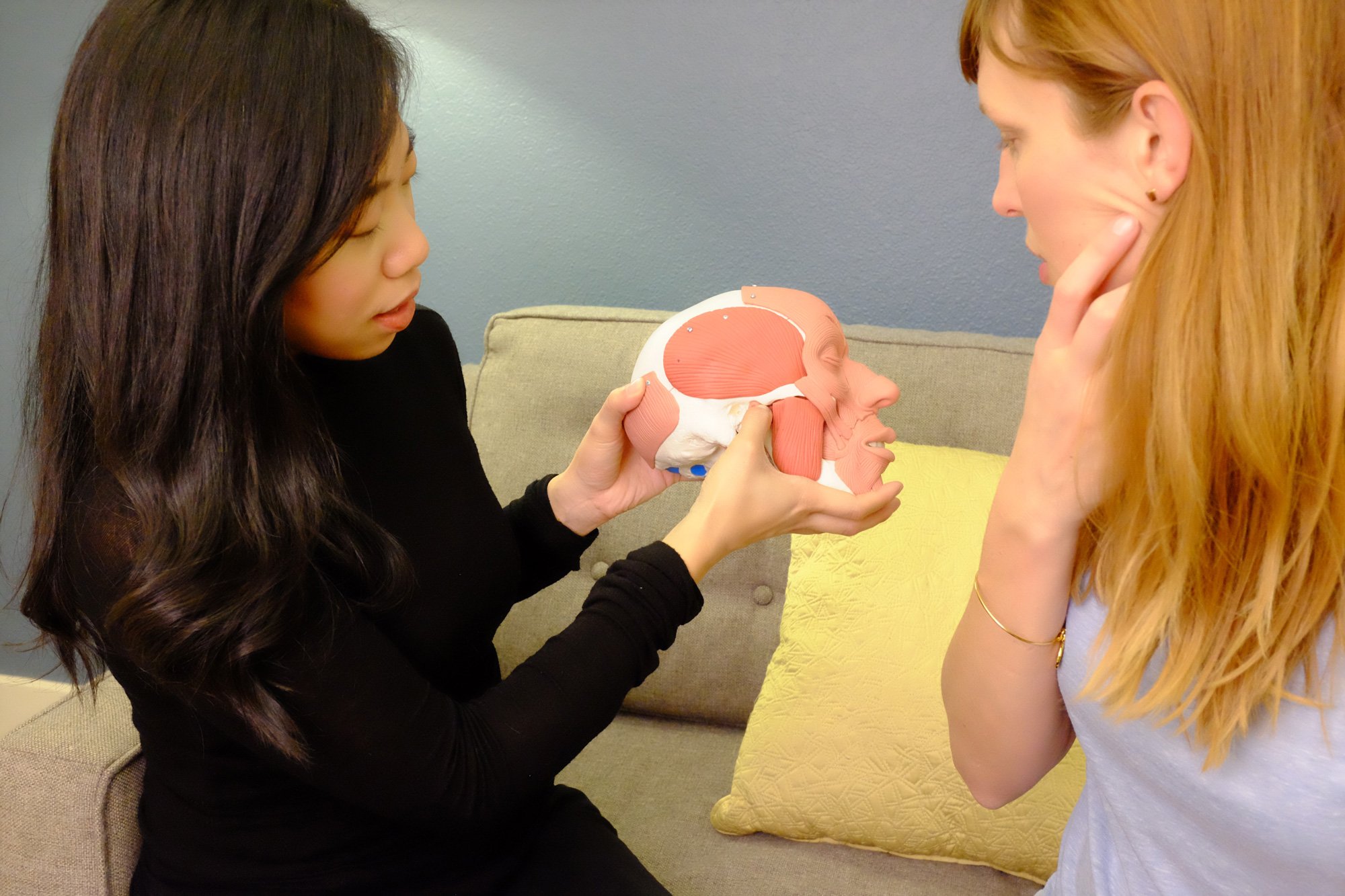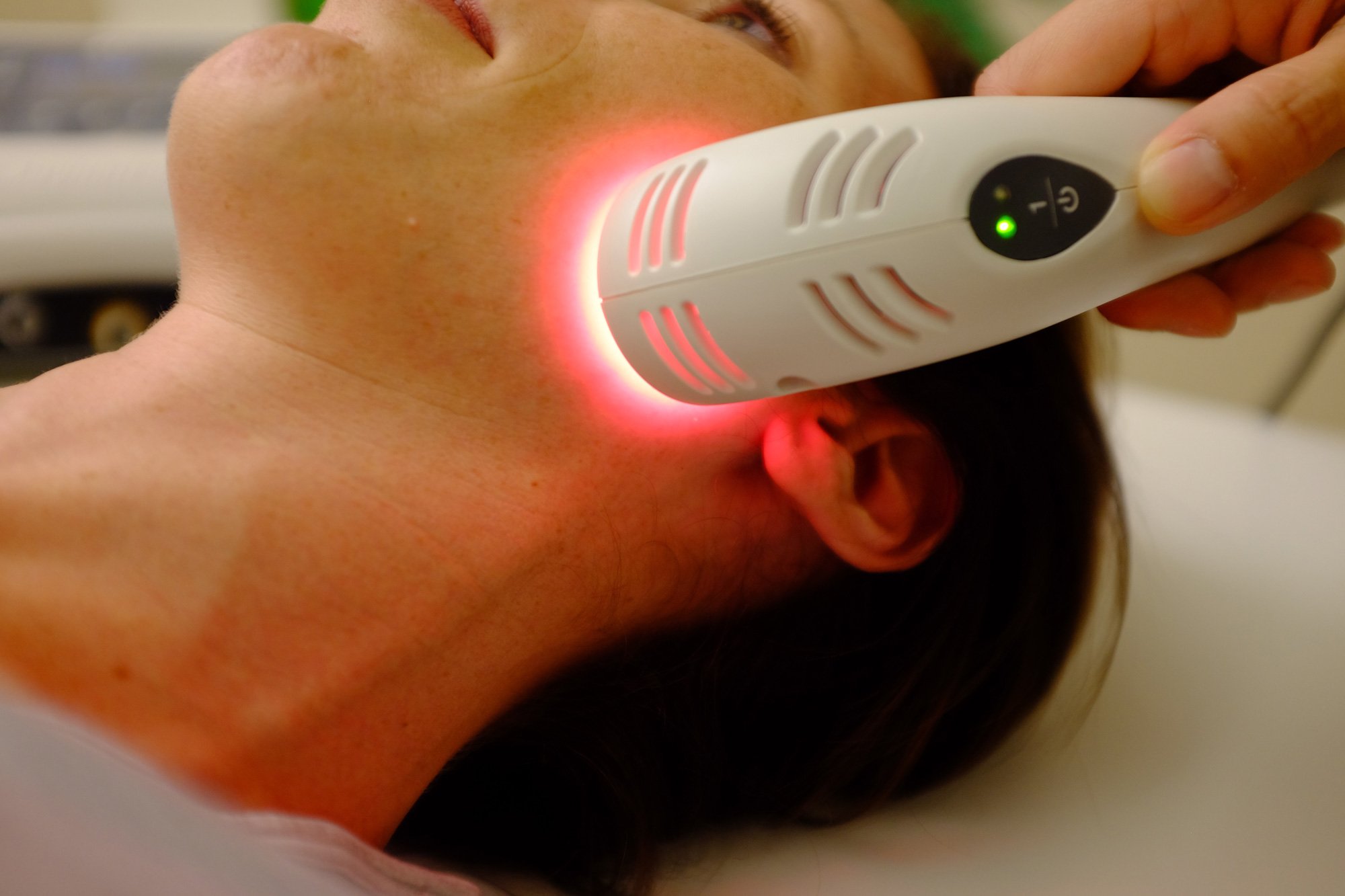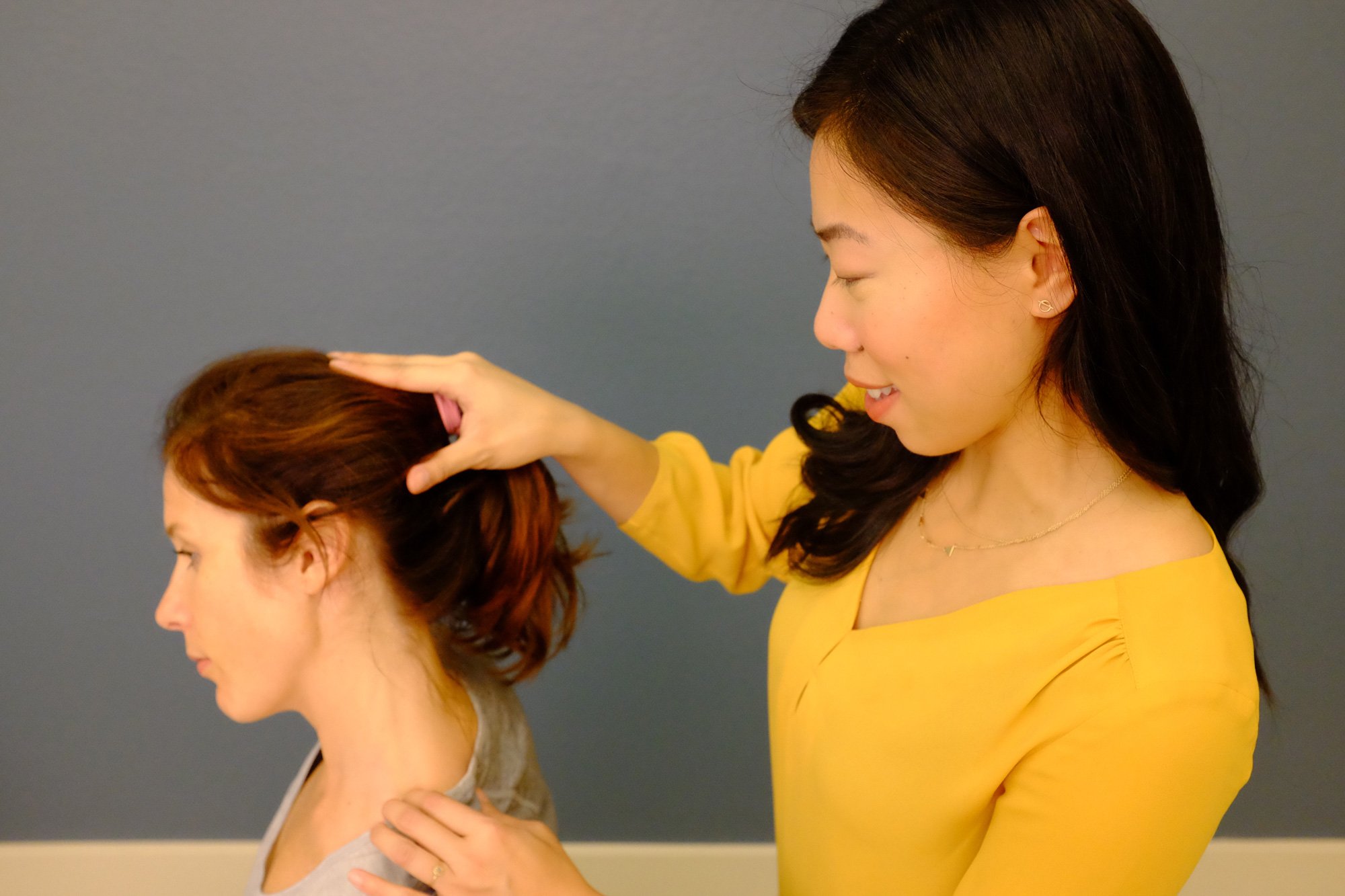How JQPT Can Help You Manage TMJ Dysfunction and Orofacial Pain
TMJ dysfunction and orofacial pain can cause a variety of symptoms, such as clicking or popping in the jaw, muscle tension in the face, head, neck, pain with eating or talking, limited jaw ROM, locking of jaw ( inability to open or close jaw), ringing in the ear, referred pain to teeth*, face, head, neck, and headaches.
If you are experiencing any of these symptoms, it is important to see a physical therapist who specializes in orofacial pain and TMJ disorders. Physical therapists at JQPT (Jane Quach Physical Therapy), a Seattle-based physical therapy clinic, can help you reduce pain and improve function.
* If there is referred pain to teeth, it must be cleared by DDS that pain is not originating from a tooth/teeth.
Temporomandibular Joint (TMJ) Disorders
Temporomandibular joint (TMJ) disorders may cause pain and discomfort in the jaw, face, and head. TMJ disorders can be caused by a variety of factors, including arthritis, connective tissue diseases, injury, and chronic grinding or clenching of teeth.
Orofacial physical therapists can help to manage TMJ disorders by:
Assessing the condition of the TMJ and the surrounding muscles
Teaching exercises to strengthen and/or relax the muscles around the TMJ, face, head, and neck
Providing manual therapy to reduce pain and improve range of motion
Educating patients on how to manage their symptoms and prevent future episodes
Cervical & Thoracic Pain
Orofacial pain management can be combined with cervical and thoracic therapy that addresses pain affecting the head, face, neck, and back.
The muscles and joints in the neck and jaw are closely connected. When there is an imbalance with the jaw, it can cause inflammation, muscle tension, and pain, which can be referred to the teeth, head, face, and, neck. Similarly, when there is tension in the neck, head, face muscles, it can affect the function and cause symptoms in the jaw.
Orofacial pain physical therapists can assess your head, face, jaw and neck and develop a treatment plan to reduce pain and improve function.
For example, an orofacial physical therapist may use manual therapy to treat a patient with limited jaw opening (“locked jaw”). They will also teach the patient exercises and give them a home program in order to help to relax the muscles, decrease inflammation and pain, and improve mobility and function.
Orofacial Pain
Orofacial pain is any pain that occurs in the mouth, jaws, and face. It can occur due to many reasons, including musculoskeletal disorders/imbalances, trauma (accidents), nerve injury, bruxism (teeth grinding), neuropathological diseases, dental caries and periodontal diseases.
Orofacial physical therapists can help to manage orofacial pain by working with your healthcare providers to:
Identify the underlying cause of the pain
Developing a treatment plan to address the cause of the pain and reduce symptoms
Providing manual therapy to reduce pain and improve range of motion
Educating patients on how to manage their symptoms and prevent future
follow-up sessions
Following your initial evaluation, follow-up sessions are one-on-one with a board certified Doctor of Physical Therapy.
Sessions may include (expand to see details):
-
What is Dry Needling?
Dry needling is a scientifically-supported physical therapy method that employs a thin, sterile needle to address pain and movement impairments. This technique targets specific points within the body to alleviate discomfort and enhance muscular function.
It is a specialized treatment option for pain relief and improved muscle movement. The needle penetrates the skin and stimulates underlying myofascial trigger points and muscular and connective tissues. The needle allows a physical therapist to target tissues they are not as accessible to reach with their hands. It can help with chronic or new pain, and can be beneficial for athletes or people recovering from injuries or surgery.
Dry needling helps to decrease pain and stiffness and improve mobility and performance. It is typically combined with other physical therapy exercises and techniques.
What to expect:
During your dry needling procedure, a physical therapist will insert the needle through the skin to target specific tissues and pain points. The length of the needle will depend on the area of your body that is being dry needled. Most patients feel little or no pain as the needle is inserted.
Dry needling takes as little as 15-20 minutes during the treatment session, and there is a low risk of infection. After the procedure, patients typically experience pain relief and improved movement lasting from a few hours to several weeks. This positive impact is amplified when combined with a carefully selected exercise/home care program.
While the side effects from dry needling are usually minor, patients can experience:
Bruising at the dry needling site
Fatigue or lack of energy
Soreness for 24-36 hrs
Once the procedure is complete, your physical therapist will work to create an individualized plan that uses the benefits of dry needling along with other treatment techniques.
-
Soft tissue mobilization
Trigger points.
Myofascial restrictions.
Decrease swelling (e.g. postpartum abdominal swelling).
Increase scar mobility (e.g. post-surgery).
Joint mobilizations
Decrease stiffness in joints.
Improve range of motion and function.
-
Used to aid in the healing process by increasing blood flow in the treated area.
Decreases pain from the reduction of swelling/edema.
Provides a gentle massage of muscles, tendons and/ or ligaments in the treated area.
-
Aid in muscle training.
Pain relief.
Prevention of muscle atrophy after musculoskeletal injuries or post-op.
-
Evaluation and recording the electrical activity produced by skeletal muscles.
Retraining of muscles.
-
Used for chronic and acute pain.
LLLT may reduce pain related to inflammation, and promote healing
How JQPT works with your Dental Practitioner (DDS/DMD)
JQPT physical therapists work closely with dental practitioners (DDS/DMD) to provide comprehensive care for patients with TMJ disorders and other orofacial pain conditions.
-
Please fill out all paperwork from JQPT’s portal.
It is important to share any relevant diagnostic imaging such as X-ray, CT scan, and MRIs from your medical providers.
-
JQPT physical therapists will communicate with your dental practitioner to get a better understanding of your medical history, dental history, and current symptoms.
JQPT physical therapists may work with your dental practitioner to coordinate your treatment.
For example, they may provide you with exercises to do to prepare for a dental procedure, or to help you recover from a lengthy dental procedure.
-
JQPT physical therapists can continue to work with you after you have completed your dental/oral treatment.
They can help you to maintain your progress and to prevent future problems.
Here are some specific examples of how JQPT physical therapists and dental practitioners can work together to help patients:
A patient with TMJ disorder may need to see a dentist to get imaging and medications. The physical therapist can work with the dentist to make sure that the patient is progressing towards goals with exercises and education to prepare for the dental procedure and to recover from the dental procedure.
A patient with chronic headaches may be referred to a physical therapist to learn exercises to help relieve their headaches, and ways to prevent and to decrease the amount of future headaches if they are musculoskeletal related. Communication with dental providers would be beneficial to communicate positions and triggers for pt headaches during procedures including cleanings.
A patient who has had surgery on their jaw may need to see a physical therapist to help them regain range of motion and strength in their jaw. The physical therapist can work with the dentist to make sure that the patient is following the medical protocols and performing correct exercises to help progress properly in their recovery.
TREATMENT RATES
We are a fee-for-service clinic and collect payment at the time of service (credit card, flexible savings accounts and health savings account cards). After each session we will email an itemized bill (superbill) to patients who are interested in reimbursement from their insurances. Patients will then independently submit to their insurance companies, usually via email or insurance portal.
To verify your insurances’ reimbursement policies, feel free to independently contact your insurance provider and inquire about their requirements and coverage for out-of-network physical therapy.
Cancellation policy: No shows, appointment cancellations or changes made within 48 hours are subject to a $80 charge for first missed appointment, after the second late cancellation, the full service rate will be charged.
50-Minute Initial Evaluation – $250
50-Minute Follow-Up – $200
30-Minute Follow-Up* – $120
*may be scheduled after third session per therapist




